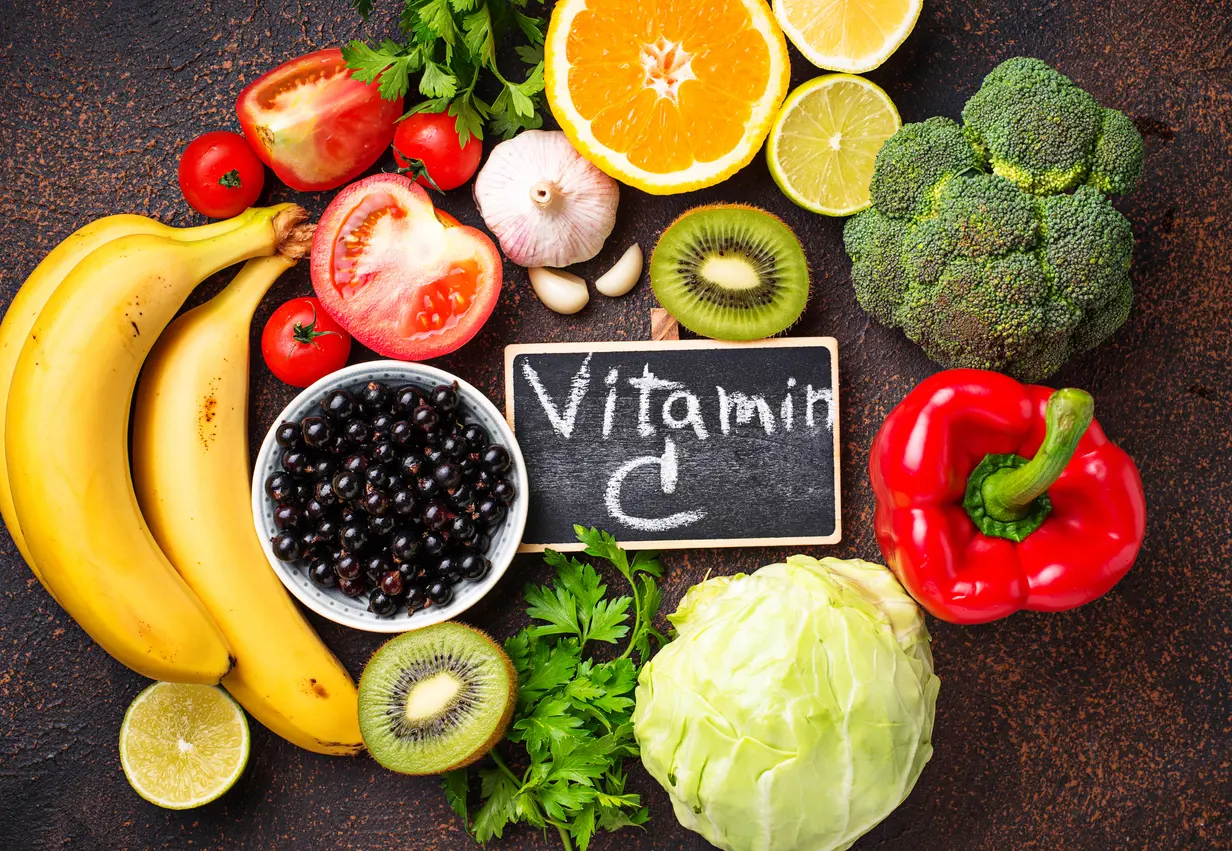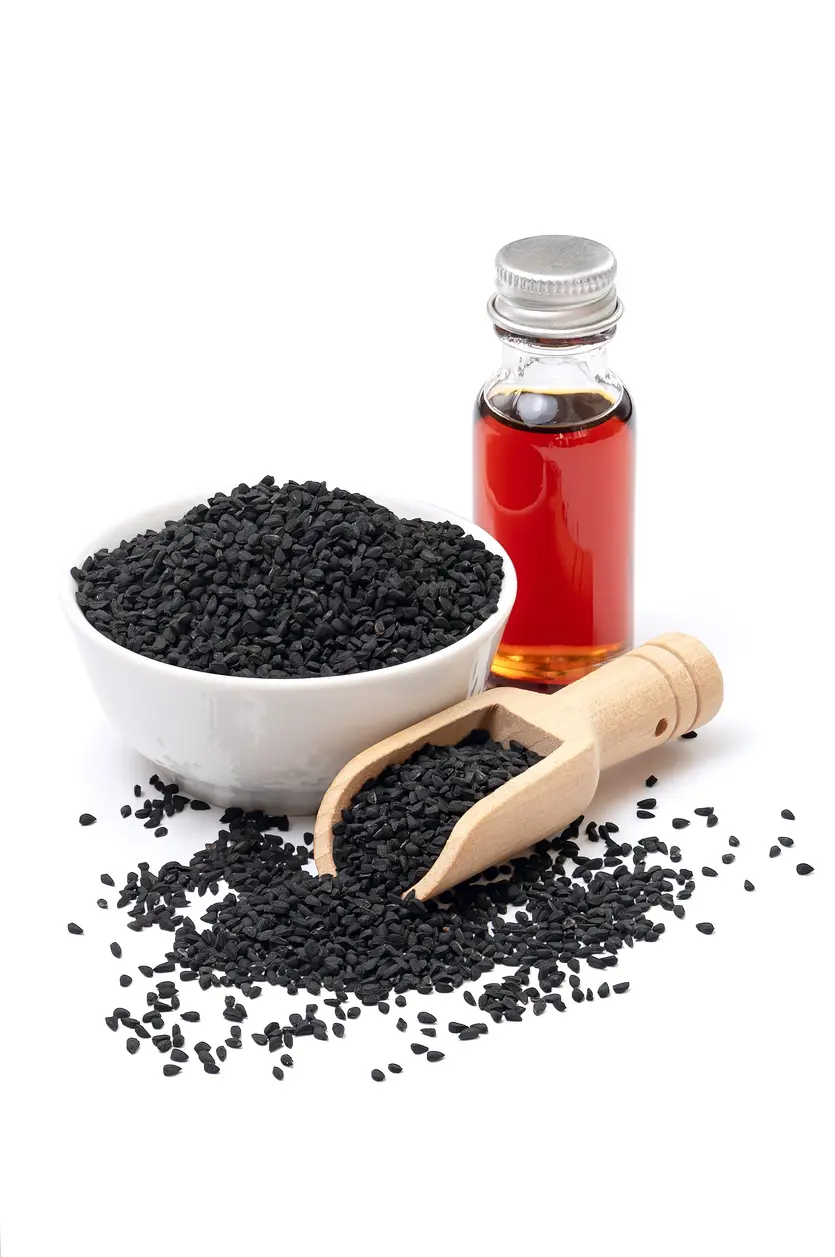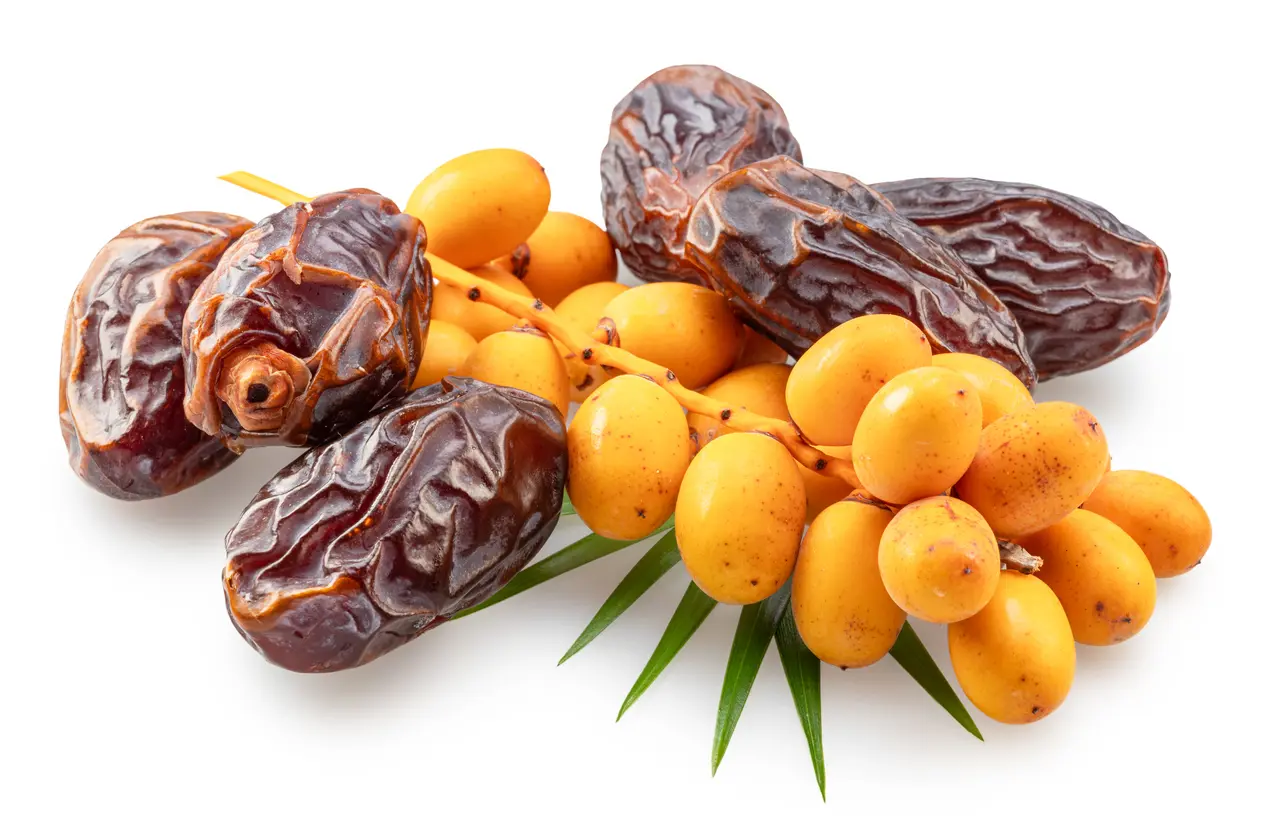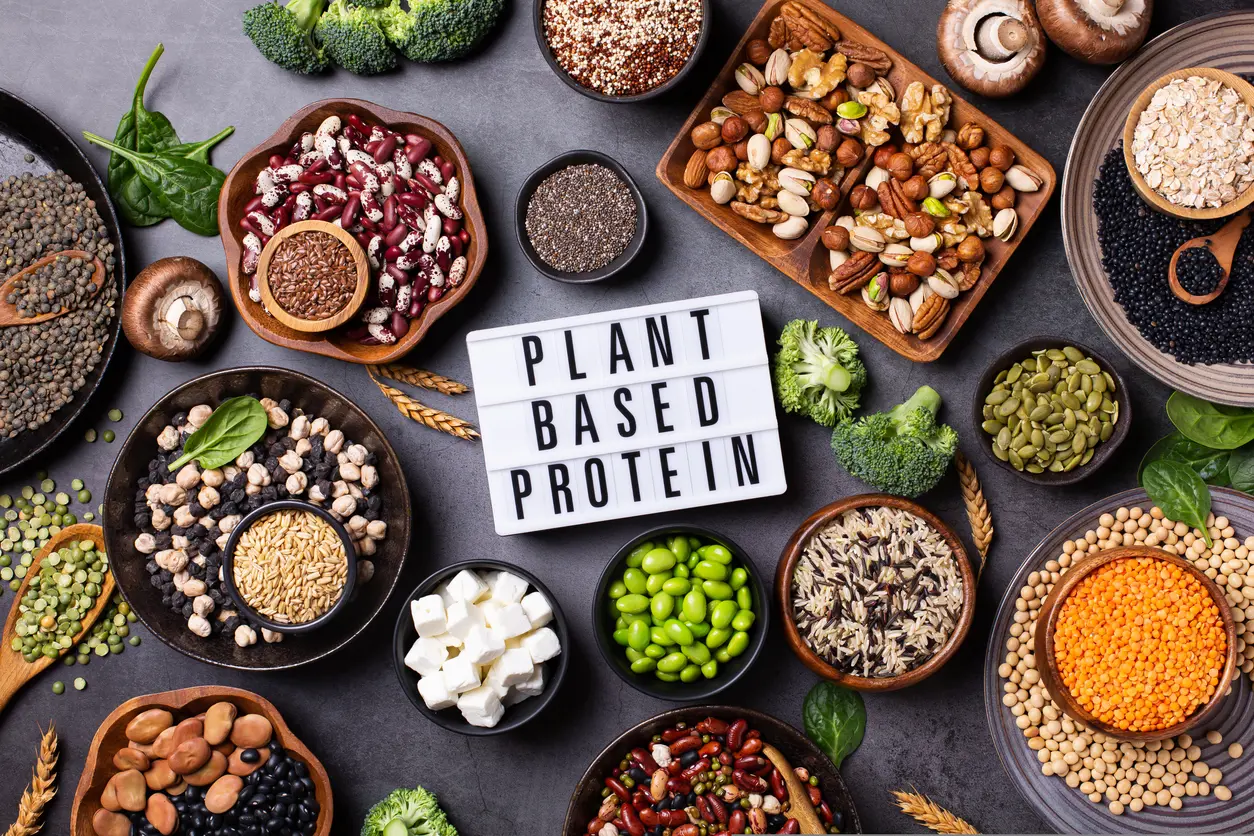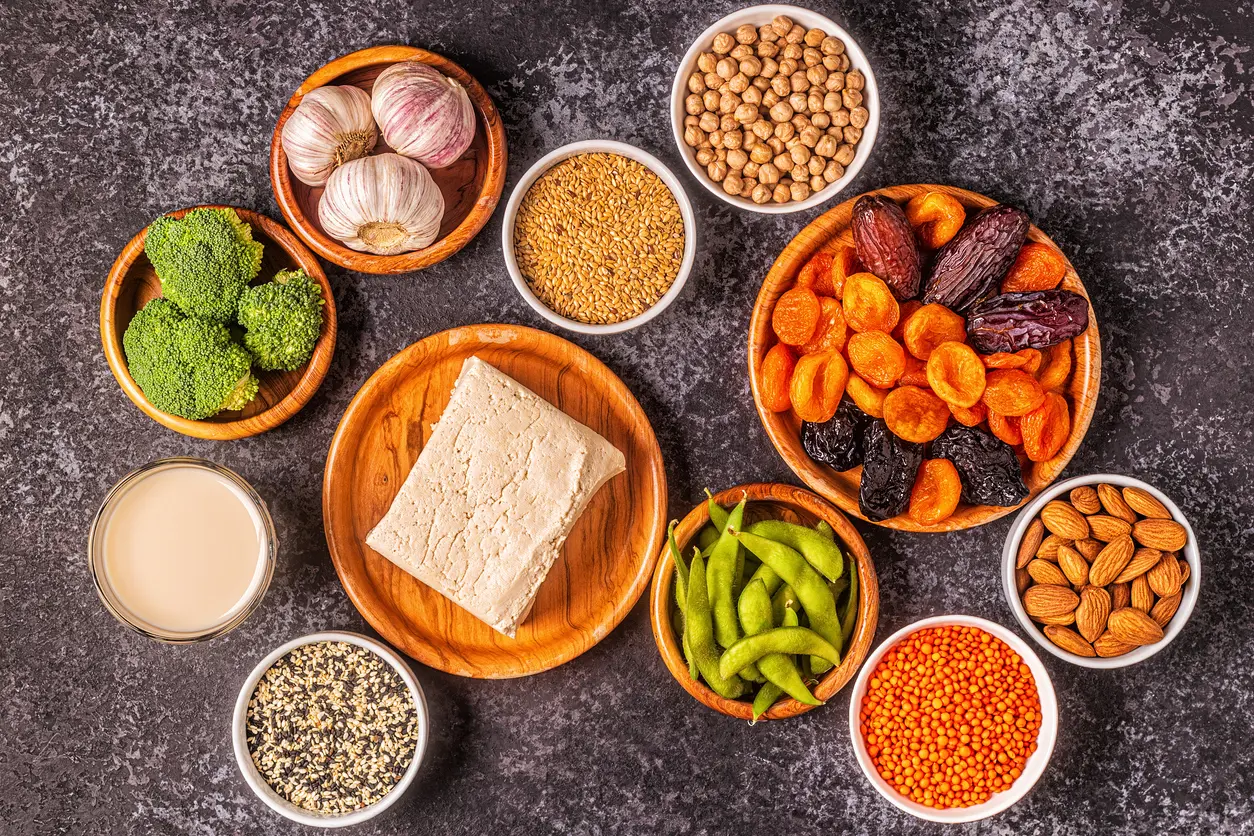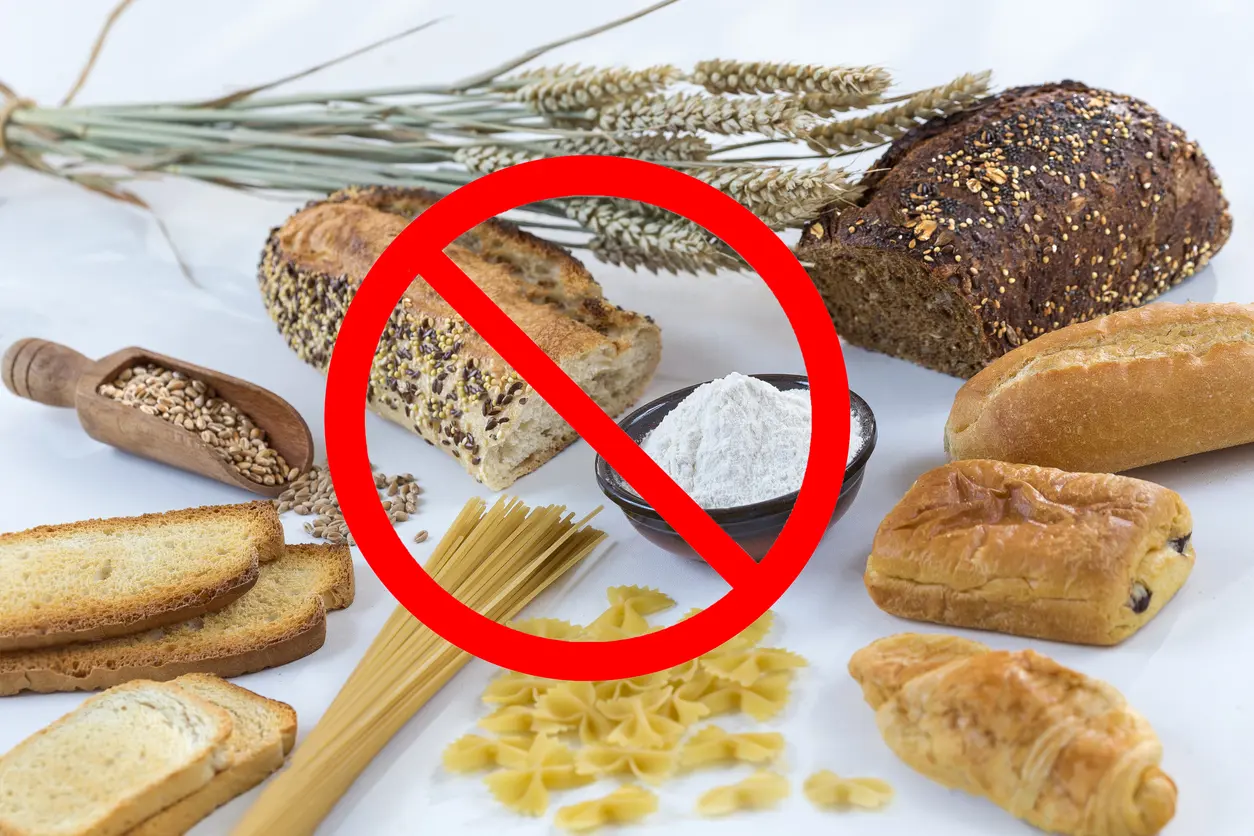20 Calcium-Rich Foods That Strengthen Your Bones Naturally

Strong bones are built on more than just good luck. Calcium, an essential mineral stored primarily in your bones and teeth, plays a leading role in keeping them strong and fracture-resistant as you age. From childhood growth to maintaining bone density later in life, your body depends on consistent calcium intake to stay structurally sound.
Unfortunately, bone mass naturally declines with age, and many adults fail to meet their daily calcium needs, thereby increasing their risk of osteoporosis and fractures. [2] Calcium and Vitamin D: Important for Bone Health The good news is that you don't have to rely on supplements right away. A balanced diet that includes a variety of calcium-rich foods can help you protect your bones and support overall health, naturally.
In this article, you’ll find 20 of the best foods high in calcium, from classic dairy options to nutrient-dense plant-based picks, and learn simple ways to add them to your meals.
Why Calcium Is Essential for Bone Health
Calcium is the most abundant mineral in the human body, and about 99 percent of it is stored in your bones and teeth. [1] Calcium, National Institute Of Health It plays a central role in bone structure, keeping your skeleton dense, strong, and able to withstand everyday stress. Without enough calcium, the body pulls this mineral from your bones to maintain critical functions like muscle contractions, blood clotting, and nerve signaling.
Over time, this process can lead to reduced bone mass and a higher risk of fractures. This is especially important for older adults, postmenopausal women, and people with family histories of osteoporosis.
According to the National Institutes of Health (NIH), adults aged 19 to 50 need around 1,000 milligrams of calcium per day, while women over 50 and men over 70 should aim for 1,200 milligrams daily to maintain bone health and prevent loss of bone density. [1] Calcium, National Institute Of Health
Calcium does not work alone. It depends on vitamin D to help with absorption in the intestines, magnesium to support bone formation, and vitamin K2 to help direct calcium into the bones rather than soft tissues. Getting enough of these nutrients from a balanced diet is just as important as meeting your calcium goals.
A lifelong habit of eating calcium-rich foods, staying active, and getting adequate sun exposure for vitamin D can help reduce your risk of osteoporosis and keep your bones healthy well into older age. [2] Calcium and Vitamin D: Important for Bone Health
Foods High in Calcium for Better Bone Health
Dairy Sources:
1. Milk
A classic and reliable source of calcium, one cup of cow’s milk provides about 300 milligrams of calcium, or roughly 30 percent of the Daily Value (DV). It also contains vitamin D (in fortified varieties), protein, and potassium, all of which support bone health. [3] Milk, USDA
- Other benefits: Milk provides both calcium and vitamin D, a combination shown to reduce bone loss and fracture risk in older adults. [3] Milk, USDA
- How to enjoy it: Drink it plain, add it to smoothies, pour over whole grain cereal, or use in cooking.
2. Yogurt
Yogurt, especially low-fat or Greek varieties, is one of the most calcium-dense dairy foods. A 6-ounce serving can provide between 250 to 400 milligrams of calcium, depending on the brand and type. [4] Elena Hadjimbei, George Botsaris, Stavrie Chrysostomou Beneficial Effects of Yoghurts and Probiotic Fermented Milks and Their Functional Food Potential, doi: 10.3390/foods11172691 2022
- Other benefits: Yogurt offers probiotics, which support gut health, and high-quality protein for muscle and bone repair. Many brands are also fortified with vitamin D. [4] Elena Hadjimbei, George Botsaris, Stavrie Chrysostomou Beneficial Effects of Yoghurts and Probiotic Fermented Milks and Their Functional Food Potential, doi: 10.3390/foods11172691 2022
- How to enjoy it: Eat it with fruit and seeds, blend into smoothies, or use in place of sour cream.
3. Cheese
Hard cheeses, like parmesan and cheddar are especially high in calcium. For example, one ounce of Parmesan cheese contains about 330 milligrams of calcium. Softer cheeses like mozzarella contain around 200 milligrams per ounce. [5] Rachel Lindstrom, Prateek Sharma Determination of insoluble calcium content in Cheddar, feta, Juustoleipa, and mozzarella cheeses using acid-base buffering curves, doi: 10.3168/jdsc.2024-0561. eCollection 2025 Jan.
- Other benefits: Cheese provides protein, phosphorus, and fat-soluble vitamins like A and K2, which help direct calcium into bones.
- How to enjoy it: Sprinkle over salads, melt into omelets, or enjoy with whole grain crackers.
Animal Sources:
4. Canned Sardines
Canned sardines are small but powerful. A 3-ounce serving with edible bones provides about 325 milligrams of calcium, which is more than a glass of milk. The bones are soft and safe to eat, and they are where the calcium is concentrated. [6] Heitor O Santos, Theresa L May, Allain A Bueno Eating more sardines instead of fish oil supplementation: Beyond omega-3 polyunsaturated fatty acids, a matrix of nutrients with cardiovascular benefits, doi: 10.3389/fnut.2023.1107475
- Other benefits: Sardines are rich in omega-3 fatty acids and vitamin D, both of which help reduce inflammation and improve bone mineral density. [6] Heitor O Santos, Theresa L May, Allain A Bueno Eating more sardines instead of fish oil supplementation: Beyond omega-3 polyunsaturated fatty acids, a matrix of nutrients with cardiovascular benefits, doi: 10.3389/fnut.2023.1107475
- How to enjoy it: Mash onto whole grain toast, mix into salads, or eat with mustard and lemon.
5. Canned Salmon
Similar to sardines, canned salmon that includes bones offers a strong calcium boost, which is about 180 to 240 milligrams per 3-ounce serving. It is also rich in protein and vitamin D, making it excellent for bone and joint support. [7] Marian K Malde, Susanne Bügel, Mette Kristensen et. al. Calcium from salmon and cod bone is well absorbed in young healthy men: a double-blinded randomised crossover design, doi: 10.1186/1743-7075-7-61
- Other benefits: Salmon is high in omega-3s and supports heart health, which is important for overall wellness as you age. [8] Jose J Lara, Maria Economou, A Michael Wallace, Anne Rumley, Gordon Lowe et al Benefits of salmon eating on traditional and novel vascular risk factors in young, non-obese healthy subjects: doi: 10.1016/j.atherosclerosis.2006.06.018.
- How to enjoy it: Mix into salmon patties, add to pasta dishes, or use in sandwiches.
Plant-Based Sources:
6. Tofu
Tofu can be a powerful source of calcium. Just half a cup of firm tofu made with calcium sulfate can contain 250 to 860 milligrams of calcium, depending on the brand and preparation method. Be sure to check the label for “calcium-set” or “calcium sulfate” as the coagulant. [9] Mark Messina, Alison Duncan, Virginia Messina et. al The health effects of soy: A reference guide for health professionals: 2022 Aug 11;9:970364. doi: 10.3389/fnut.2022.970364
- Other benefits: Tofu also provides plant-based protein, iron, and isoflavones, which may help reduce bone loss after menopause. [9] Mark Messina, Alison Duncan, Virginia Messina et. al The health effects of soy: A reference guide for health professionals: 2022 Aug 11;9:970364. doi: 10.3389/fnut.2022.970364
- How to enjoy it: Stir-fry with vegetables, bake with sesame sauce, or crumble into tacos or scrambles.
7. Soy Milk
Fortified soy milk is one of the best non-dairy alternatives for calcium, with 1 cup typically offering 300 milligrams of calcium, similar to cow’s milk. Many varieties are also fortified with vitamin D and B12. [9] Mark Messina, Alison Duncan, Virginia Messina et. al The health effects of soy: A reference guide for health professionals: 2022 Aug 11;9:970364. doi: 10.3389/fnut.2022.970364
- Other benefits: Soy milk provides protein comparable to dairy milk and contains isoflavones, which may support bone health. [9] Mark Messina, Alison Duncan, Virginia Messina et. al The health effects of soy: A reference guide for health professionals: 2022 Aug 11;9:970364. doi: 10.3389/fnut.2022.970364
- How to enjoy it: Use in coffee, pour over cereal, blend into smoothies, or cook with it in baking recipes.
8. Almonds
Almonds are one of the most calcium-rich nuts, offering about 75 milligrams of calcium per ounce (around 23 almonds). While not as concentrated as dairy, they are easy to include in daily snacks or meals. [10] Berta Gonçalves, Teresa Pinto, Alfredo Aires, Maria Cristina Morais et. al Composition of Nuts and Their Potential Health Benefits—An Overview: 2023 Feb 23;12(5):942. doi: 10.3390/foods12050942
- Other benefits: Almonds also provide magnesium, healthy fats, and vitamin E, all of which support bone health and inflammation control. [10] Berta Gonçalves, Teresa Pinto, Alfredo Aires, Maria Cristina Morais et. al Composition of Nuts and Their Potential Health Benefits—An Overview: 2023 Feb 23;12(5):942. doi: 10.3390/foods12050942
- How to enjoy it: Snack on raw or roasted almonds, blend into nut butter, or sprinkle chopped almonds on oatmeal or salads.
9. Chia Seeds
Chia seeds contain about 180 milligrams of calcium per 2 tablespoons, along with plant-based omega-3 fats, fiber, and phosphorus, all nutrients linked to bone strength. [11] Evelyn M Montes Chañi, Sandaly O S Pacheco, Gustavo A Martínez et. al Long-Term Dietary Intake of Chia Seed Is Associated with Increased Bone Mineral Content and Improved Hepatic and Intestinal Morphology in Sprague-Dawley Rats: 2018 Jul 19;10(7):922. doi: 10.3390/nu10070922
- Other benefits: Their high fiber content supports gut health, which may indirectly improve nutrient absorption. Chia also contains magnesium and boron, which are important for calcium metabolism. [11] Evelyn M Montes Chañi, Sandaly O S Pacheco, Gustavo A Martínez et. al Long-Term Dietary Intake of Chia Seed Is Associated with Increased Bone Mineral Content and Improved Hepatic and Intestinal Morphology in Sprague-Dawley Rats: 2018 Jul 19;10(7):922. doi: 10.3390/nu10070922
- How to enjoy it: Add to smoothies, make chia pudding, or mix into yogurt and oatmeal.
10. Sesame Seeds (and Tahini)
Just 1 tablespoon of sesame seeds provides about 88 milligrams of calcium, while 2 tablespoons of tahini (sesame paste) can offer around 120 milligrams. Sesame seeds are also rich in zinc and phosphorus. [12] Ammara Arooj, Roshina Rabail, Muhammad Naeem, Gulden Goksen et. al. A comprehensive review of the bioactive components of sesame seeds and their impact on bone health issues in postmenopausal women: 2023 Jun 6;14(11):4966-4980. doi: 10.1039/d3fo00531c
- Other benefits: The lignans and healthy fats in sesame seeds may support bone mineral density and hormone-related bone protection. [12] Ammara Arooj, Roshina Rabail, Muhammad Naeem, Gulden Goksen et. al. A comprehensive review of the bioactive components of sesame seeds and their impact on bone health issues in postmenopausal women: 2023 Jun 6;14(11):4966-4980. doi: 10.1039/d3fo00531c
- How to enjoy it: Use tahini in dressings, dips, and sauces or sprinkle whole sesame seeds on salads, stir-fries, or baked goods.
11. Dark Leafy Greens
Certain dark leafy greens like kale and collard greens are excellent sources of calcium. One cooked cup of collard greens provides about 260 milligrams, and a cup of cooked kale delivers around 180 milligrams. [1] Calcium, National Institute Of Health
- Other benefits: These greens are rich in vitamin K, magnesium, and antioxidants that support bone formation and reduce inflammation. Unlike spinach, they are lower in oxalates, which means calcium is more easily absorbed. [13] Francis Kweku Amagloh, Richard Atinpoore Atuna, Richard McBride 3 et. al. Nutrient and Total Polyphenol Contents of Dark Green Leafy Vegetables, and Estimation of Their Iron Bioaccessibility Using the In Vitro Digestion/Caco-2 Cell Model: 2017 Jul 22;6(7):54. doi: 10.3390/foods6070054
- How to enjoy it: Sauté with olive oil and garlic, add to soups, or blend into smoothies.
12. Bok Choy
Also known as Chinese cabbage, bok choy is a low-oxalate leafy green that offers about 160 milligrams of calcium per cooked cup. It is also a good source of vitamin A, vitamin C, and potassium. [1] Calcium, National Institute Of Health
- Other benefits: Its low oxalate content makes its calcium easier to absorb compared to other greens. It also adds hydration and fiber to your diet. [14] Emal Naseri, Kong Xiangyu, Chunmei Hu, Aliya Ayaz, Mohammad Malyar Rahmani et. al Bok-choy promotes growth performance, lipid metabolism and related gene expression in Syrian golden hamsters fed with a high-fat diet: 2020 Mar 26;11(3):2693-2703. doi: 10.1039/c9fo02975c.
- How to enjoy it: Stir-fry with sesame oil, steam lightly, or chop into soups and broths.
13. White Beans
One cup of cooked white beans offers around 160 milligrams of calcium, along with plant-based protein, magnesium, and potassium. [15] Amy P Mullins, Bahram H Arjmandi Health Benefits of Plant-Based Nutrition: Focus on Beans in Cardiometabolic Diseases, 2021 Feb 5;13(2):519. doi: 10.3390/nu13020519
- Other benefits: Beans also provide resistant starch and fiber, which benefit gut health and may enhance mineral absorption. [15] Amy P Mullins, Bahram H Arjmandi Health Benefits of Plant-Based Nutrition: Focus on Beans in Cardiometabolic Diseases, 2021 Feb 5;13(2):519. doi: 10.3390/nu13020519
- How to enjoy it: Add to soups and stews, toss into salads, or mash into dips.
14. Broccoli
While not as concentrated in calcium as dairy, one cup of cooked broccoli contains about 60 milligrams, and its high bioavailability makes it a valuable contributor to bone health. [16] Rahamat Unissa Syed, Sivakumar Sivagurunathan Moni 3, Mohammed Khaled Bin Break et. al Broccoli: A Multi-Faceted Vegetable for Health: An In-Depth Review of Its Nutritional Attributes, Antimicrobial Abilities, and Anti-inflammatory Properties, 2023 Jul 7;12(7):1157. doi: 10.3390/antibiotics12071157
- Other benefits: Broccoli is packed with vitamin C and K, both of which help maintain bone structure and collagen production. [16] Rahamat Unissa Syed, Sivakumar Sivagurunathan Moni 3, Mohammed Khaled Bin Break et. al Broccoli: A Multi-Faceted Vegetable for Health: An In-Depth Review of Its Nutritional Attributes, Antimicrobial Abilities, and Anti-inflammatory Properties, 2023 Jul 7;12(7):1157. doi: 10.3390/antibiotics12071157
- How to enjoy it: Roast with olive oil, steam with lemon, or toss into pasta and rice bowls.
15. Dried Figs
Five dried figs provide about 120 milligrams of calcium, along with fiber and small amounts of magnesium and potassium. [17] Amandeep K Sandhu, Maria Islam, Indika Edirisinghe, Britt Burton-Freeman Phytochemical Composition and Health Benefits of Figs (Fresh and Dried): A Review of Literature from 2000 to 2022, 2023 Jun 3;15(11):2623. doi: 10.3390/nu15112623
- Other benefits: Naturally sweet and rich in polyphenols, figs are a great snack that supports both bone and digestive health. [17] Amandeep K Sandhu, Maria Islam, Indika Edirisinghe, Britt Burton-Freeman Phytochemical Composition and Health Benefits of Figs (Fresh and Dried): A Review of Literature from 2000 to 2022, 2023 Jun 3;15(11):2623. doi: 10.3390/nu15112623
- How to enjoy it: Eat on their own, add to trail mix, or slice into oatmeal or salads.
16. Edamame
These young soybeans pack a nutritional punch. One cup of cooked edamame offers about 100 milligrams of calcium, along with plant-based protein, fiber, and iron. [9] Mark Messina, Alison Duncan, Virginia Messina et. al The health effects of soy: A reference guide for health professionals: 2022 Aug 11;9:970364. doi: 10.3389/fnut.2022.970364
- Other benefits: Edamame is a complete protein source and contains isoflavones, which may help maintain bone density, especially in postmenopausal women. [9] Mark Messina, Alison Duncan, Virginia Messina et. al The health effects of soy: A reference guide for health professionals: 2022 Aug 11;9:970364. doi: 10.3389/fnut.2022.970364
- How to enjoy it: Steam and sprinkle with sea salt, toss into grain bowls, or blend into a dip.
17. Seaweed
Certain types of edible seaweed, like wakame or nori, are surprisingly rich in calcium. One cup of raw wakame can provide around 150 milligrams, while nori sheets used in sushi offer smaller but notable amounts. [18] Ana R Circuncisão, Marcelo D Catarino, Susana M Cardoso, Artur M S Silva Minerals from Macroalgae Origin: Health Benefits and Risks for Consumers: 2018 Oct 23;16(11):400. doi: 10.3390/md16110400
- Other benefits: Seaweed is a natural source of iodine, magnesium, and fiber, all of which contribute to overall health, including thyroid and bone function. [18] Ana R Circuncisão, Marcelo D Catarino, Susana M Cardoso, Artur M S Silva Minerals from Macroalgae Origin: Health Benefits and Risks for Consumers: 2018 Oct 23;16(11):400. doi: 10.3390/md16110400
- How to enjoy it: Add to soups and broths, wrap around rice, or crumble into salads.
18. Orange Juice
Many commercial orange juices are fortified with calcium, offering around 300 milligrams per cup, depending on the brand. Be sure to choose varieties labeled “calcium-fortified.” [19] Sang Gil Lee, Meng Yang, Ying Wang, Terrence Vance, Beate Lloyd et. al Impact of orange juice consumption on bone health of the U.S. population in the national health and nutrition examination survey 2003-2006: 2014 Oct;17(10):1142-50. doi: 10.1089/jmf.2013.0072
- Other benefits: Orange juice naturally contains vitamin C, which supports collagen production and enhances calcium absorption.
- How to enjoy it: Drink a glass with breakfast or use as a base for smoothies. It is higher in simple sugars because it does not contain much fiber, though, so pair it with a protein or fat to slow digestion.
19. Amaranth
This ancient grain is not only high in protein and fiber but also rich in calcium. One cup of cooked amaranth delivers about 115 milligrams of calcium. [1] Calcium, National Institute Of Health
- Other benefits: It also contains magnesium, phosphorus, and iron, making it a well-rounded grain for bone and overall health. [20] Valéria Maria Caselato-Sousa, Jaime Amaya-Farfán State of knowledge on amaranth grain: a comprehensive review, 2012 Apr;77(4):R93-104. doi: 10.1111/j.1750-3841.2012.02645.x.
- How to enjoy it: Use as a base for porridge, salads, or baked into veggie burgers.
20. Okra
Okra offers about 80 milligrams of calcium per cup (cooked) and contains magnesium, vitamin C, and fiber, which all support bone health. [1] Calcium, National Institute Of Health
- Other benefits: Fiber in okra also contributes to blood sugar control and gut health, which are important for overall wellness.
- How to enjoy it: Roast with olive oil, add to stews, or sauté with tomatoes and onions.
Conclusion
Building and maintaining strong bones is not just about taking supplements or drinking milk. It is about creating a well-rounded, nutrient-rich diet that includes a variety of calcium-rich foods from both dairy and non-dairy sources. By incorporating these foods into your daily meals and supporting calcium absorption with nutrients like vitamin D and magnesium, you give your bones the best chance to stay strong and healthy throughout life.
Remember, your bones are living tissue. They respond to what you eat, how you move, and how you care for your body overall. With small, consistent changes, like adding leafy greens to dinner or snacking on almonds, you can make a meaningful impact. If you have specific health concerns or are unsure about your calcium status, talk to a healthcare provider or registered dietitian for guidance tailored to your needs.
Strong bones start with smart choices, and the best time to start is now.
Was this article helpful?
-
Calcium, National Institute Of Health;
https://ods.od.nih.gov/factsheets/Calcium-Consumer/ -
Calcium and Vitamin D: Important for Bone Health;
https://www.niams.nih.gov/health-topics/calcium-and-vitamin-d-important-bone-health -
Milk, USDA;
https://www.fns.usda.gov/cn/school-nutrition-standards-updates/milk -
Beneficial Effects of Yoghurts and Probiotic Fermented Milks and Their Functional Food Potential, doi: 10.3390/foods11172691; Elena Hadjimbei, George Botsaris, Stavrie Chrysostomou; ( 2022 )
https://pmc.ncbi.nlm.nih.gov/articles/PMC9455928/ -
Determination of insoluble calcium content in Cheddar, feta, Juustoleipa, and mozzarella cheeses using acid-base buffering curves, doi: 10.3168/jdsc.2024-0561. eCollection 2025 Jan.; Rachel Lindstrom, Prateek Sharma;
https://pubmed.ncbi.nlm.nih.gov/39877164/ -
Eating more sardines instead of fish oil supplementation: Beyond omega-3 polyunsaturated fatty acids, a matrix of nutrients with cardiovascular benefits, doi: 10.3389/fnut.2023.1107475; Heitor O Santos, Theresa L May, Allain A Bueno;
https://pmc.ncbi.nlm.nih.gov/articles/PMC10153001/ -
Calcium from salmon and cod bone is well absorbed in young healthy men: a double-blinded randomised crossover design, doi: 10.1186/1743-7075-7-61; Marian K Malde, Susanne Bügel, Mette Kristensen et. al.;
https://pmc.ncbi.nlm.nih.gov/articles/PMC2916003/ -
Benefits of salmon eating on traditional and novel vascular risk factors in young, non-obese healthy subjects: doi: 10.1016/j.atherosclerosis.2006.06.018.; Jose J Lara, Maria Economou, A Michael Wallace, Anne Rumley, Gordon Lowe et al;
https://pubmed.ncbi.nlm.nih.gov/17069820/#:~:text=Results%3A%20Compared%20to%20no%2Dfish,%25%20(P%3C0.05). -
The health effects of soy: A reference guide for health professionals: 2022 Aug 11;9:970364. doi: 10.3389/fnut.2022.970364; Mark Messina, Alison Duncan, Virginia Messina et. al;
https://pmc.ncbi.nlm.nih.gov/articles/PMC9410752/ -
Composition of Nuts and Their Potential Health Benefits—An Overview: 2023 Feb 23;12(5):942. doi: 10.3390/foods12050942; Berta Gonçalves, Teresa Pinto, Alfredo Aires, Maria Cristina Morais et. al;
https://pmc.ncbi.nlm.nih.gov/articles/PMC10000569/ -
Long-Term Dietary Intake of Chia Seed Is Associated with Increased Bone Mineral Content and Improved Hepatic and Intestinal Morphology in Sprague-Dawley Rats: 2018 Jul 19;10(7):922. doi: 10.3390/nu10070922; Evelyn M Montes Chañi, Sandaly O S Pacheco, Gustavo A Martínez et. al;
https://pmc.ncbi.nlm.nih.gov/articles/PMC6073254/ -
A comprehensive review of the bioactive components of sesame seeds and their impact on bone health issues in postmenopausal women: 2023 Jun 6;14(11):4966-4980. doi: 10.1039/d3fo00531c; Ammara Arooj, Roshina Rabail, Muhammad Naeem, Gulden Goksen et. al.;
https://pubmed.ncbi.nlm.nih.gov/37212033/ -
Nutrient and Total Polyphenol Contents of Dark Green Leafy Vegetables, and Estimation of Their Iron Bioaccessibility Using the In Vitro Digestion/Caco-2 Cell Model: 2017 Jul 22;6(7):54. doi: 10.3390/foods6070054; Francis Kweku Amagloh, Richard Atinpoore Atuna, Richard McBride 3 et. al.;
https://pmc.ncbi.nlm.nih.gov/articles/PMC5532561/ -
Bok-choy promotes growth performance, lipid metabolism and related gene expression in Syrian golden hamsters fed with a high-fat diet: 2020 Mar 26;11(3):2693-2703. doi: 10.1039/c9fo02975c.; Emal Naseri, Kong Xiangyu, Chunmei Hu, Aliya Ayaz, Mohammad Malyar Rahmani et. al;
https://pubmed.ncbi.nlm.nih.gov/32182310/ -
Health Benefits of Plant-Based Nutrition: Focus on Beans in Cardiometabolic Diseases, 2021 Feb 5;13(2):519. doi: 10.3390/nu13020519; Amy P Mullins, Bahram H Arjmandi;
https://pmc.ncbi.nlm.nih.gov/articles/PMC7915747/ -
Broccoli: A Multi-Faceted Vegetable for Health: An In-Depth Review of Its Nutritional Attributes, Antimicrobial Abilities, and Anti-inflammatory Properties, 2023 Jul 7;12(7):1157. doi: 10.3390/antibiotics12071157; Rahamat Unissa Syed, Sivakumar Sivagurunathan Moni 3, Mohammed Khaled Bin Break et. al;
https://pmc.ncbi.nlm.nih.gov/articles/PMC10376324/ -
Phytochemical Composition and Health Benefits of Figs (Fresh and Dried): A Review of Literature from 2000 to 2022, 2023 Jun 3;15(11):2623. doi: 10.3390/nu15112623; Amandeep K Sandhu, Maria Islam, Indika Edirisinghe, Britt Burton-Freeman;
https://pmc.ncbi.nlm.nih.gov/articles/PMC10255635/ -
Minerals from Macroalgae Origin: Health Benefits and Risks for Consumers: 2018 Oct 23;16(11):400. doi: 10.3390/md16110400; Ana R Circuncisão, Marcelo D Catarino, Susana M Cardoso, Artur M S Silva;
https://pmc.ncbi.nlm.nih.gov/articles/PMC6266857/ -
Impact of orange juice consumption on bone health of the U.S. population in the national health and nutrition examination survey 2003-2006: 2014 Oct;17(10):1142-50. doi: 10.1089/jmf.2013.0072; Sang Gil Lee, Meng Yang, Ying Wang, Terrence Vance, Beate Lloyd et. al;
https://pubmed.ncbi.nlm.nih.gov/25055347/ -
State of knowledge on amaranth grain: a comprehensive review, 2012 Apr;77(4):R93-104. doi: 10.1111/j.1750-3841.2012.02645.x.; Valéria Maria Caselato-Sousa, Jaime Amaya-Farfán;
https://pubmed.ncbi.nlm.nih.gov/22515252/




